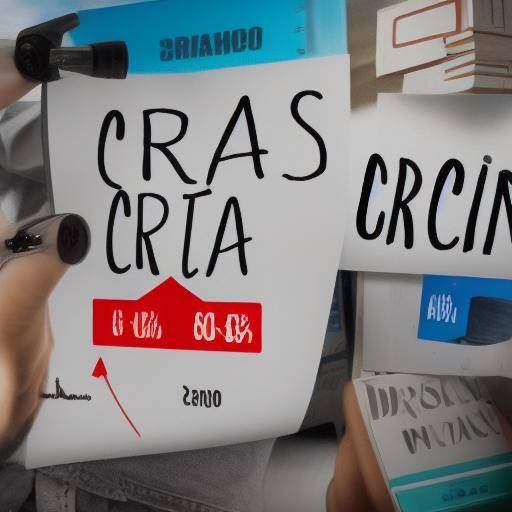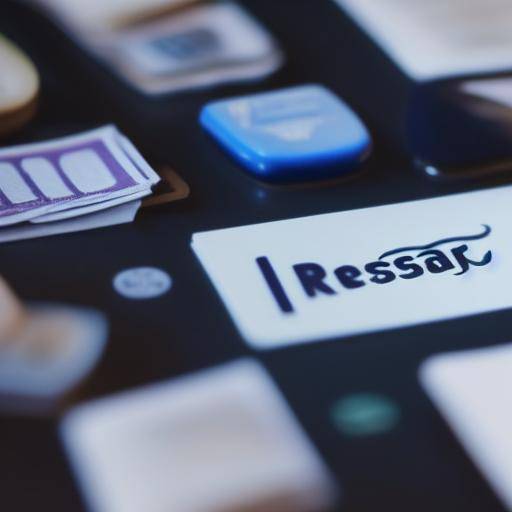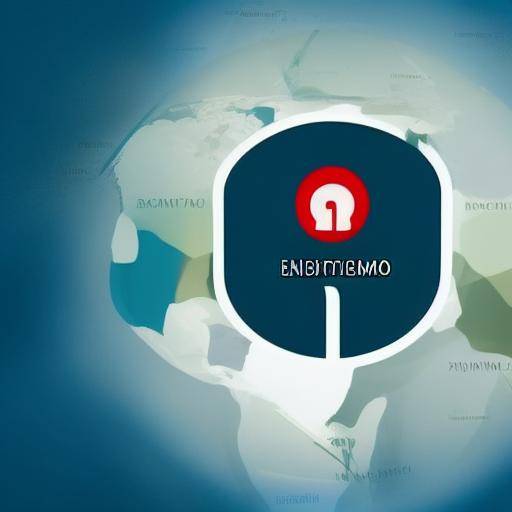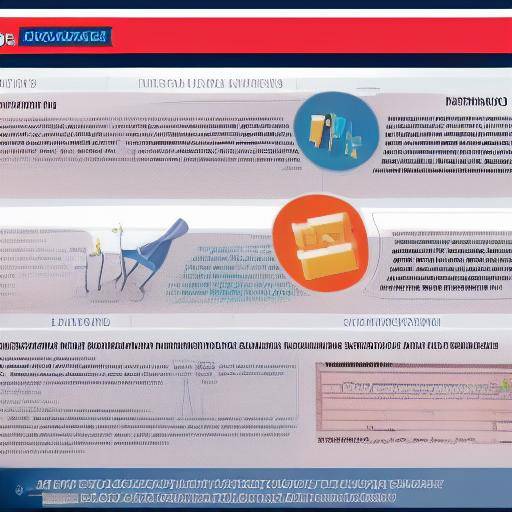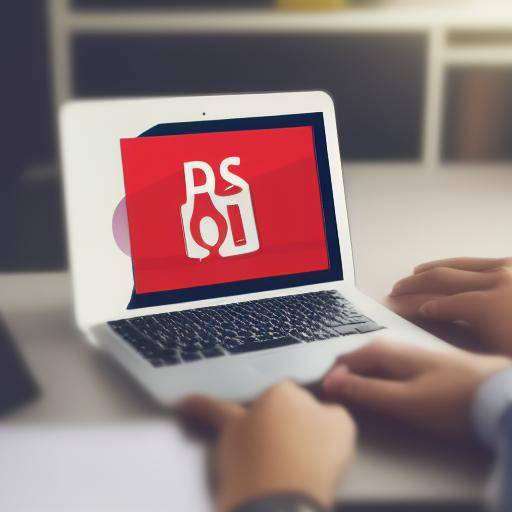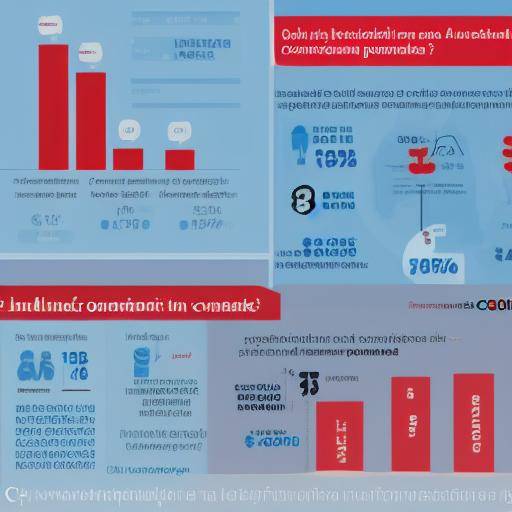
Debt management is a common concern for many people. Accounting with a solid debt-paying plan is crucial to achieving financial stability. However, to strengthen this plan, it is essential to consider the importance of having an emergency fund. In this article, we will explore how an emergency fund can provide security and support to your debt payment plan, as well as how it contributes to long-term savings.
Introduction
As we face financial challenges, peace and security play a crucial role in making financial decisions. In this regard, the creation of an emergency fund provides a level of security that allows unforeseen confrontation without having to resort to new debts. In addition, this fund provides financial support to keep the focus on debt payments without neglecting other aspects of life. At the same time, the emergency fund promotes long-term savings by avoiding relapse into additional debts. Throughout this article, we will explore these ideas in depth and provide practical recommendations that will help strengthen your personal finances.
History and Background
The notion of an emergency fund has been a key financial practice throughout history. From ancient cultures to modern financial systems, the importance of financial security has been a constant. At the time of Mesopotamia, the need to keep a percentage of crops to face times of scarcity was already mentioned. In the modern era, this idea has been translated into the recommendation of having an emergency fund covering three to six months of expenditure.
It is crucial to understand that the notion of an emergency fund has not only been recognized over the centuries, but its importance has been magnified in times of economic and personal crises. From the Great Depression to the 2008 global recession, the need for financial support has been demonstrated. These historic events have led to greater recognition of the importance of having an emergency fund as an integral part of personal financial management.
Analysis of the Fund
The essence of an emergency fund is to provide financial security in an unpredictable world. The ability to face unexpected expenses, such as home repairs, medical bills or job loss, provides a level of security that significantly contributes to mental tranquility.
With an emergency fund, quick-interest loans or credit cards are avoided to cover emergencies. This financial support avoids the cycle of indebtedness that could hinder the debt-payment process. At the same time, the emergency fund allows to maintain the approach to paying debts without diverting to new financial obligations.
Comprehensive review
The creation and maintenance of an emergency fund requires strategy and commitment. Exploring different methods of cost savings and management can be critical in establishing a solid emergency fund. Some best practices include savings automation, the identification of unnecessary expenses and the creation of a realistic budget that facilitates continuous savings.
In addition, the financial support provided by an emergency fund not only benefits at the individual level, but also has an impact on the economy in general. Increased number of people with financial support reduces the risk of large-scale financial crises, as individual stability contributes to collective stability.
Comparative analysis
The concept of security, support and savings is intertwined in a crucial way by considering the importance of an emergency fund. While financial security provides peace of mind and stability, financial support acts as a safety net that prevents abrupt financial fall. These two elements, in turn, contribute to long-term savings by avoiding debt relapse and promoting greater financial stability.
Practical Tips and Accessible Tips
- Automate Savings: Establishing an automatic transfer to your emergency fund every month can ensure constant and disciplined savings.
- Review and Adjust the Budget: Constantly evaluating your expenses and looking for areas where you can reduce costs will help you allocate more funds to your emergency fund.
- Establish Saving Targets: Setting clear goals for your emergency fund will motivate you to consistently save and expand your size over time.
- Diversify the Emergency Fund: Consider dividing your emergency fund into different sources of savings, such as liquid savings accounts and low-risk investment accounts.
- Review and Update Regularly: It is important to periodically review your emergency fund to ensure that it remains adequate for your current needs and circumstances.
Information and Reviews of the Industry
According to financial experts, the creation of an emergency fund is one of the key pillars for long-term financial stability. The financial advisers recommend that, before starting to pay debts aggressively, an emergency fund should be established covering at least three to six months of basic expenses. This strategy provides a safety net that protects against financial unforeseen, while promoting the approach to debt elimination.
Case Studies and Real Life Applications
To illustrate the importance of an emergency fund, it is revealing to analyze real cases where this financial backing has been fundamental. For example, a family facing a sudden medical emergency may resort to its emergency fund rather than become even more indebted. Similarly, an unexpectedly dismissed person can count on his emergency fund to cover expenses while seeking a new job. These cases demonstrate how an emergency fund provides security and support in times of financial crisis.
Future Trends and Predictions
As financial awareness continues to thrive, more people are expected to recognize the importance of a solid emergency fund. Trends suggest that younger generations are actively adopting the practice of emergency savings as an integral part of their financial education. In addition, technology is expected to play an important role in simplifying and expediting the emergency savings process through innovative financial applications and tools.
Conclusions
In short, the creation of a solid emergency fund significantly strengthens the debt payment plan by providing security, support and promoting long-term savings. Financial security derived from an emergency fund allows unforeseen treatment without resorting to new debts, while financial support avoids deviations from the goal of paying debts. At the same time, it fosters a habit of constant savings that contributes to greater financial stability. By incorporating an emergency fund into your financial strategy, you are building a solid foundation for a more secure and stable financial future.
Frequently asked questions
What is the recommended amount for an emergency fund?
The ideal amount for an emergency fund is usually three to six months of basic expenses. However, this amount may vary according to personal circumstances and job stability.
Where should I store my emergency fund?
It is advisable to keep the emergency fund in a liquid and easily accessible savings account, preferably separated from the main account.
Is it necessary to contribute regularly to an emergency fund if I am not currently paying debts?
Yes, it is advisable to continue contributing to your emergency fund even if you are not paying debts. This will ensure that you are prepared for any future emergency and will provide long-term financial security.
Should I replenish my emergency fund after using it?
Yes, it is crucial to replenish your emergency fund after using it to cover an emergency. This will ensure that you are ready to face future eventualities.
How can I start saving for an emergency fund if my income is limited?
Even with limited income, you can start saving a small amount regularly. Each small contribution adds up and brings you closer to your saving goal.
Should I consider investing part of my emergency fund to get higher yields?
It is advisable to keep a portion of your emergency fund in a liquid and safe savings account to ensure immediate access in case of an emergency. However, once the emergency fund is fully established, you can consider investing the surplus in low-risk investment options.
Is an emergency fund just for financial unforeseen?
While an emergency fund is designed to cover financial unforeseen, it can also provide peace and flexibility to make important financial decisions, such as changing careers or facing unexpected expenses.
Can an emergency fund help with long-term planning?
Yes, an established emergency fund can provide stability and security, allowing you to focus on long-term financial planning, such as investment, retirement, and achieving significant financial targets.
In conclusion, the creation and maintenance of an emergency fund not only strengthens your capacity to pay debts, but also provides peace and security in all aspects of your financial life. By following practical advice and being prepared for the unexpected, you can build a solid foundation that will allow you to face financial challenges with confidence and maintain control of your finances in the long term.


